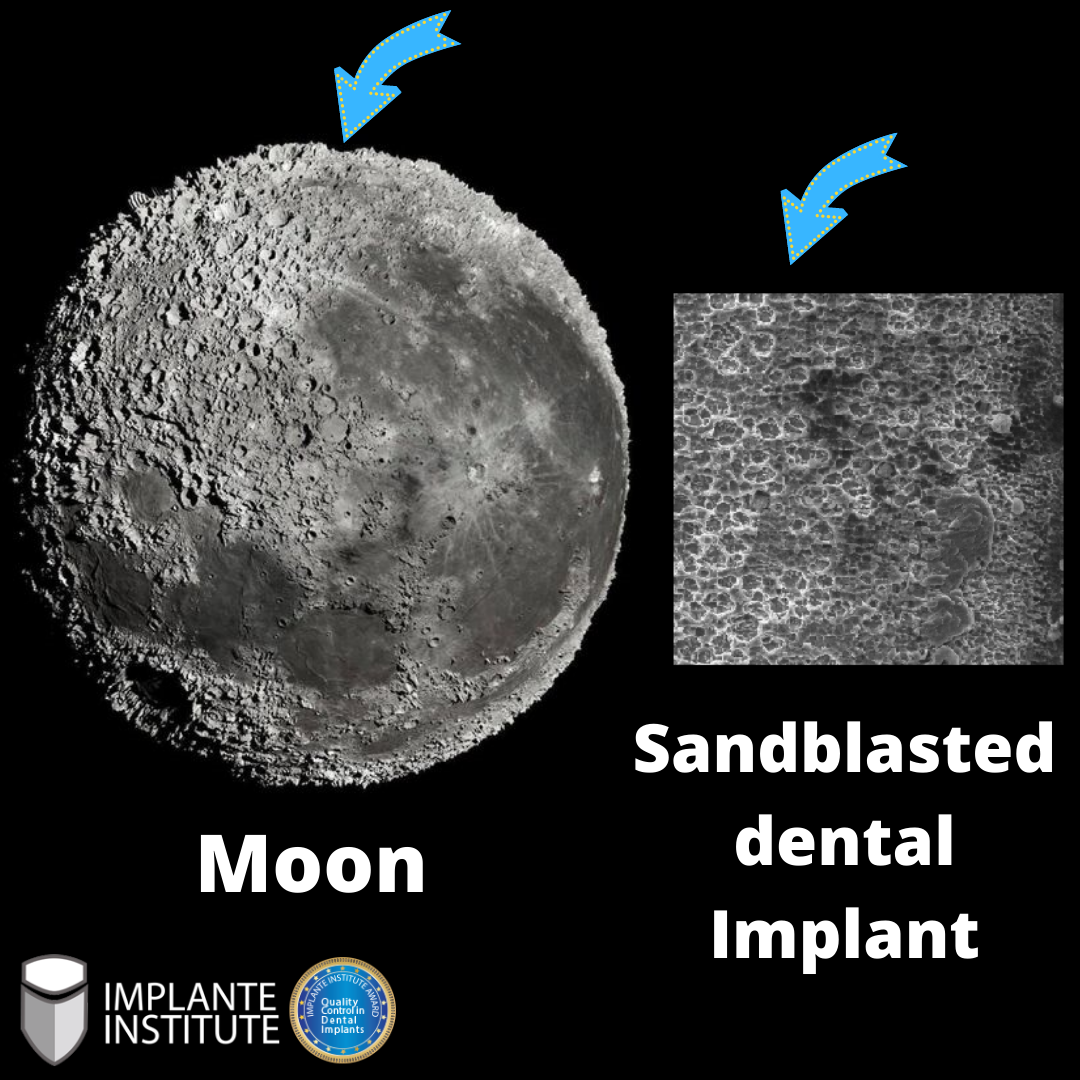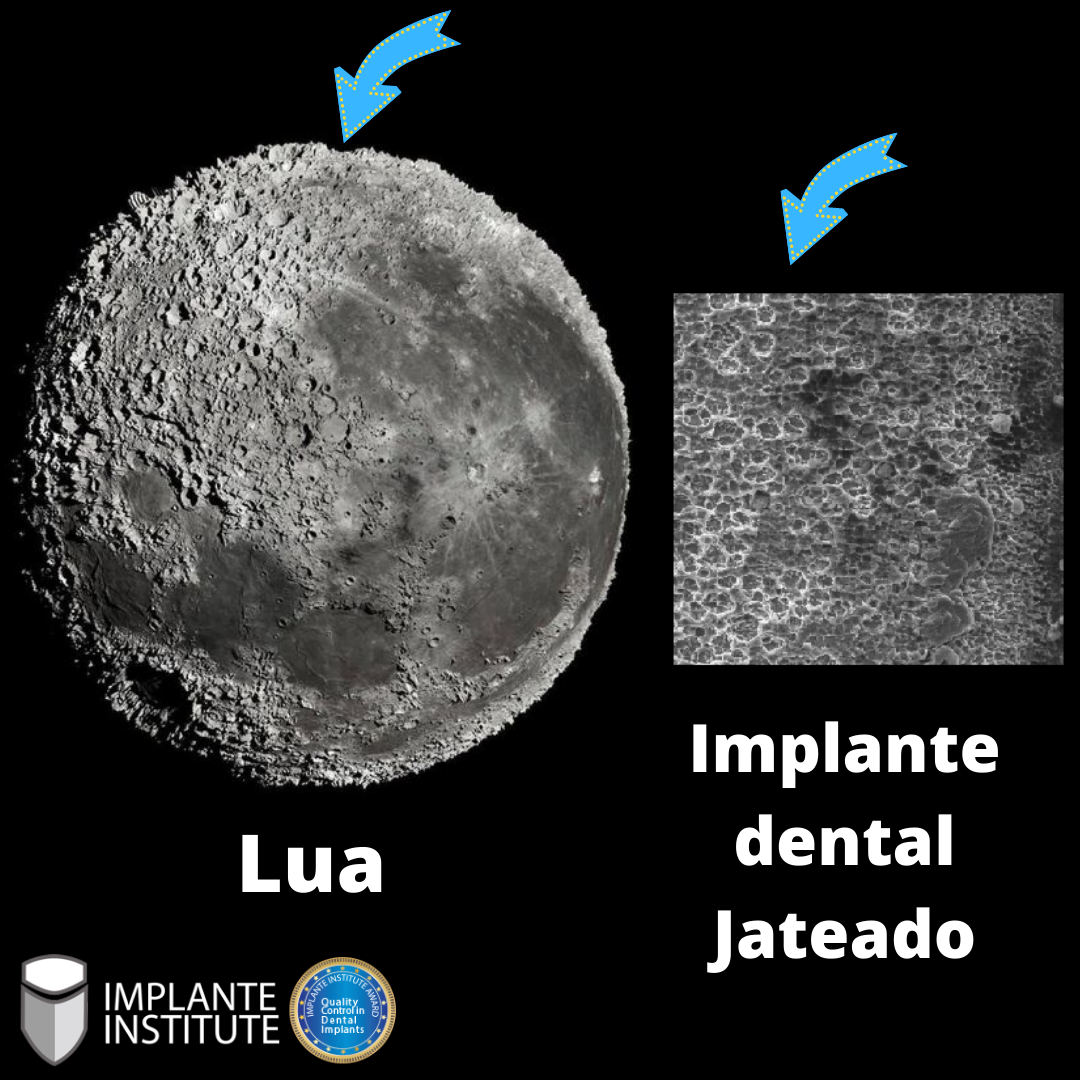Let´s compare dental implant blasting with asteroid blasting?
Let´s compare dental implant blasting with asteroid blasting?
Lunar craters are impact craters on Earth's Moon. The Moon's surface has many craters, all of which were formed by impacts. The International Astronomical Union currently recognizes 9,137 craters, of which 1,675 have been dated.[1]
The word crater was adopted from the Greek word for "vessel" (Κρατήρ a Greek vessel used to mix wine and water). Galileo built his first telescope in late 1609, and turned it to the Moon for the first time on November 30, 1609. He discovered that, contrary to general opinion at that time, the Moon was not a perfect sphere, but had both mountains and cup-like depressions. These were named craters by Johann Hieronymus Schröter (1791), extending its previous use with volcanoes.
Grove Karl Gilbert suggested in 1893 that the Moon's craters were formed by large asteroid impacts. Ralph Baldwin in 1949 wrote that the Moon's craters were mostly of impact origin. Around 1960, Gene Shoemaker revived the idea. According to David H. Levy, Gene "saw the craters on the Moon as logical impact sites that were formed not gradually, in eons, but explosively, in seconds."[3]

Evidence collected during the Apollo Project and from unmanned spacecraft of the same period proved conclusively that meteoric impact, or impact by asteroids for larger craters, was the origin of almost all lunar craters, and by implication, most craters on other bodies as well.
The formation of new craters is studied in the lunar impact monitoring program at NASA.[4] The biggest recorded creation was caused by an impact recorded on March 17, 2013.[5][6] Visible to the naked eye, the impact is believed to be from an approximately 40 kg (88 lb) meteoroid striking the surface at a speed of 90,000 km/h (56,000 mph; 16 mi/s).
In March 2018, the discovery of around 7,000 formerly unidentified lunar craters via convolutional neural network developed at the University of Toronto Scarborough was announced.[7][8] A similar study in December 2020 identified around 109,000 new craters using a deep neural network.[1]

Vamos comparar o jateamento de um implante com um jateamento de asteroides?
Crateras lunares são crateras no solo da Lua. A superfície da Lua é quase que completamente coberta de crateras, a maioria das quais formadas por grandes impactos.
A palavra cratera foi adotada por Galileu a partir da palavra em grego κρατήρας, transl. kratí̱ras, que significa "vaso". Galileu construiu seu primeiro telescópio ao final de 1609, e o apontou para a Lua pela primeira vez em 30 de Novembro de 1609. Ele descobriu que diferente da opinião geral da época, a Lua não era uma esfera completamente lisa, mas na verdade possuía elevações e depressões em forma de xícara, essas últimas batizadas por ele como crateras.
Ao contrário da Terra, ela não possui uma atmosfera para frear ou desintegrar os meteoros que se dirigem à sua superfície, fazendo com que esses corpos celestes atinjam o solo lunar com força total, causando buracos que variam conforme a dimensão e a forma de cada um.
A formação de novas crateras é estudada no programa "Lunar Impact Monitoring Program" da NASA.[3] A maior criação de cratera lunar causada por um impacto registrada, ocorreu em 17 de Março de 2013.[4] A explosão, que foi visível a olho nu, acredita-se que tenha sido consequência da queda de um meteoroide de aproximadamente 40 kg, atingindo a superfície da Lua com velocidade de 90.000 km/h.
https://pt.wikipedia.org/wiki/Crateras_lunares
